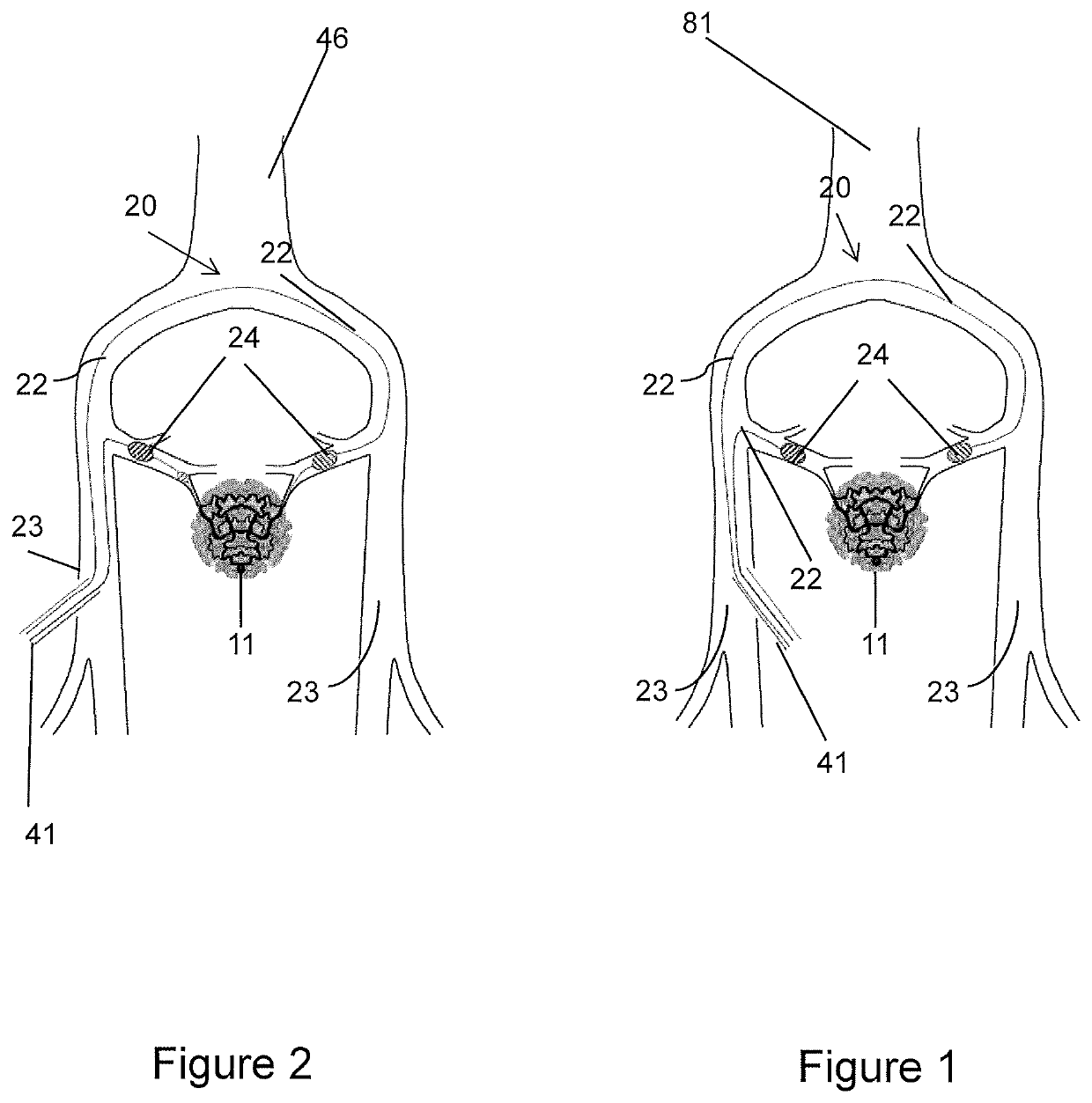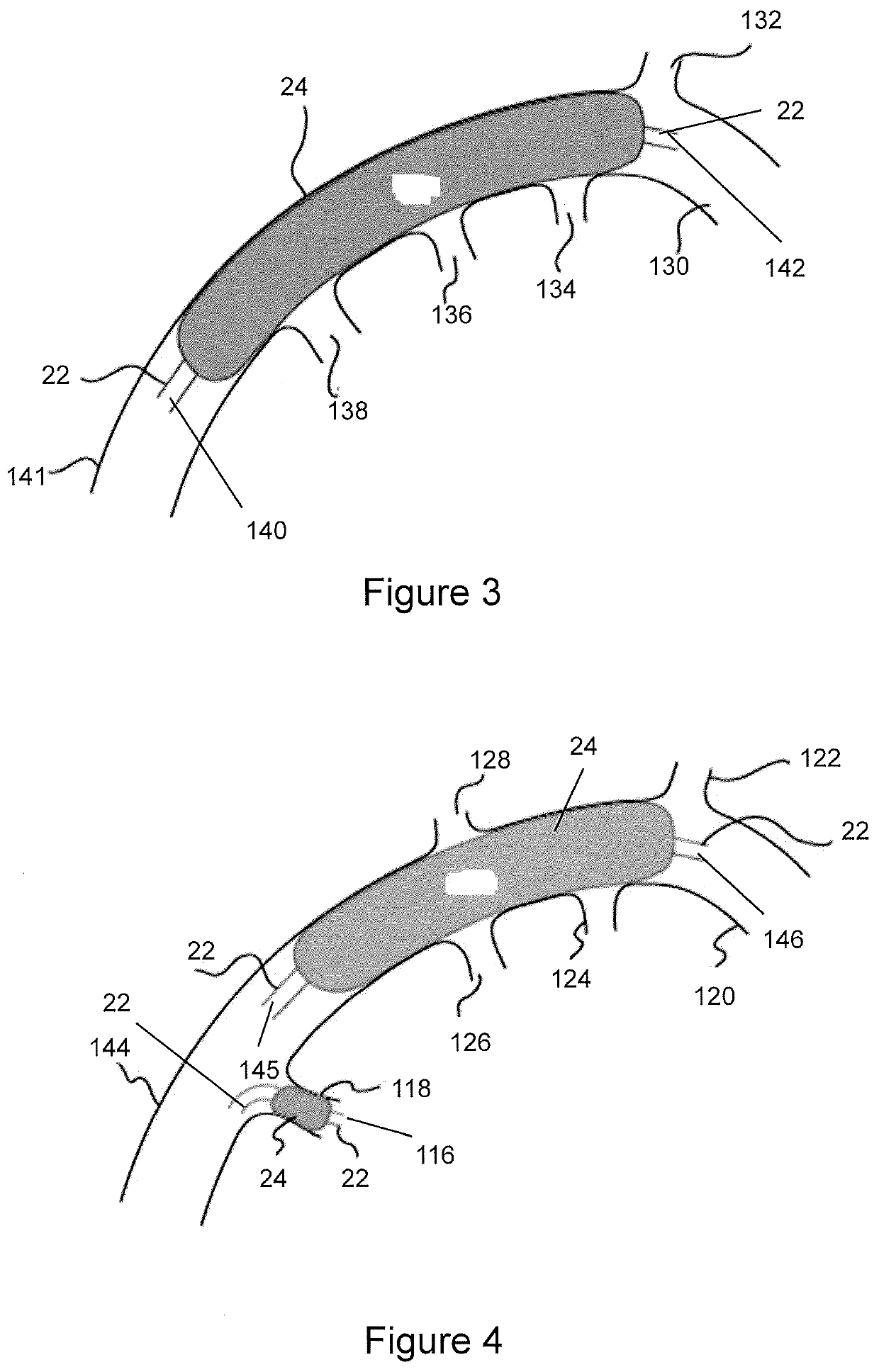The interface between the
vein or
artery and cannula requires pressure to deliver materials or receive blood and minimise the ability for blood to stagnate around the interface thereby leading to
thrombosis.
Dead space also gives rise to an area where blood can
pool and stagnate also presenting a situation where
thrombosis can occur.
The
dead space may also present an area where gas collects giving rise to the risk of a gas
embolism forming.
However, when a cannula is connected to the patient's
blood vessel at a non-perpendicular angle, the conventional cylindrical shape of the tip of the
plunger is not capable of preventing the filling of a small amount of blood into a lower part (called “the
dead space”) of the lumen of the cannula unless the tip is slid further through the lumen of the cannula and a leading part of the tip protrudes into the lumen of the vessel.
However, when a cannula with an appropriately chamfered proximal end is connected to the patient's
blood vessel at a non-perpendicular angle, the conventional cylindrical shape of the tip of the
plunger is not capable of preventing the filling of a small amount of blood into a lower part (called “the
dead space”) of the lumen of the cannula unless the tip is slid further through the lumen of the cannula and a leading part of the tip protrudes into the lumen of the vessel.
However, those access devices with multi-access treatment caps have access ports which are such that only a single
catheter may be received through a selected
access port and then through the lumen of the access device, and therefore each such device can only facilitate either an outflow from the
circulatory system to a
blood flow pump or an inflow from a
blood flow pump in the
circulatory system, but not both.
That is, those access devices with multi-access treatment caps cannot facilitate two or more inflow and outflow catheters at any one time because the lumen of those devices is unable to receive two or more catheters.
Additionally, those multi-access treatment caps do not enable a
catheter to be directed into specific positions with use of the multi-access treatment cap.
Lymph nodes that are involved are notoriously difficult to treat because of their small size.
Other problems relating to treatment of neoplasia arise from
malignant cells residing in small numbers in relatively ischemic tissue, such that systemic treatment will have diminished effect.
However, when a cannula with an appropriately chamfered proximal end is connected to the patient's
blood vessel at a non-perpendicular angle, the conventional cylindrical shape of the tip of the
plunger is not capable of preventing the filling of a small amount of blood into a lower part (called “the dead space”) of the lumen of the cannula unless the tip is slid further through the lumen of the cannula and a leading part of the tip protrudes into the lumen of the vessel.
However, those access devices with multi-access treatment caps have access ports which are such that only a single
catheter may be received through a selected
access port and then through the lumen of the access device, and therefore each such device can only facilitate either an outflow from the
circulatory system to a
blood flow pump or an inflow from a blood flow pump in the circulatory
system, but not both.
That is, those access devices with multi-access treatment caps cannot facilitate two or more inflow and outflow catheters at any one time because the lumen of those devices is unable to receive two or more catheters.
There are clear safety issues.
The high flow rates can contribute to congestive cardiac failure due to the high flow rates that manifests itself as
peripheral oedema,
lethargy, shortness of breath and
chest pain.
High flow can also cause venous hypertension.
 Login to View More
Login to View More  Login to View More
Login to View More 


